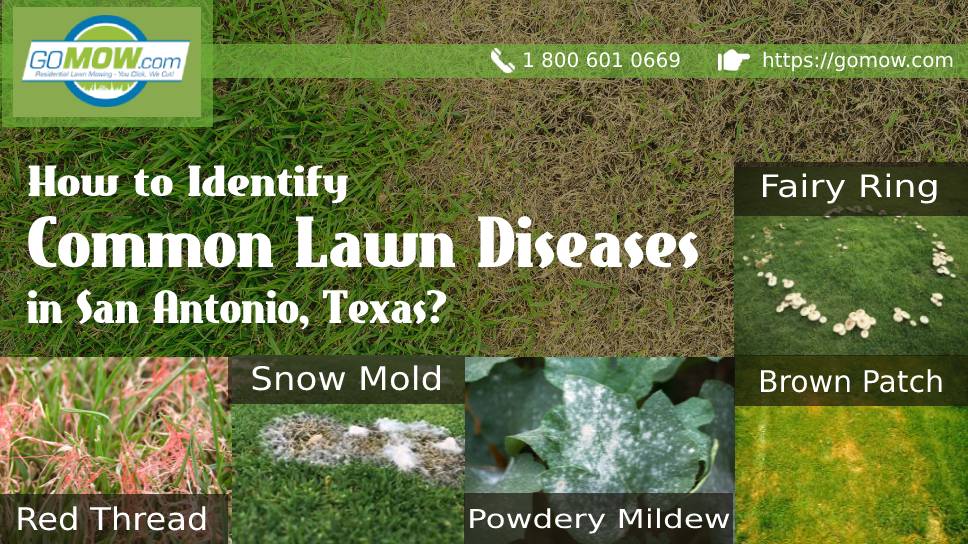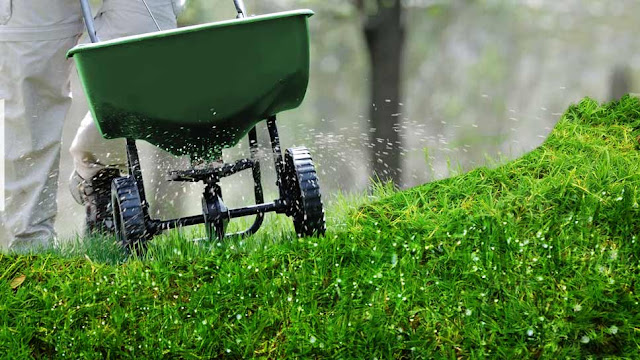How to Identify Common Lawn Diseases in San Antonio Texas?
Lawn diseases are not abnormal and can happen on anyone's lawn yard. It is expected that every lawn owner will experience lawn diseases on their grass at some point in their ownership. Heat, humidity, and poor lawn care are the major causes of lawn disease in San Antonio, Texas. It's important to carry out an inspection on your lawn at least once a month to check for lawn diseases.
In this post, we have discussed how to identify common lawn diseases in San Antonio, Texas. Finding the root cause of your lawn care problems will help you rectify the issue and take your lawn to where it belongs. There are many diseases that can affect your lawn if the appropriate conditions are not in place.
Read up on how to identify common lawn diseases in San Antonio, Texas.
1.) Red Thread
As the name implies, Red Thread appears on your lawn looking exactly like a red thread. You will notice red or pinkish threads on your lawn when there is nitrogen deficiency in the soil.
“Generally, Red Thread disease is harmless and indicates that your soil needs nutrient enrichment.”
A good application of nitrogen-rich fertilizers will usually do the magic. Red Thread diseases are prone to happen on red fescue, Kentucky bluegrass, bentgrass, and Ryegrass types.
2.) Fairy Ring
Naturally-occurring mushrooms that grow in an arc can be found in grassy lawn areas. These mushroom types grow in incomplete or complete circles and grow as much as 30 feet in diameter. They are called fairy rings because of their appearance and how they can appear on lawn yards very quickly overnight. There are three variants of the fairy ring that grows in lawns.
The first type has only mushrooms growing in it, the second type has a dark green ring with mushrooms growing in it and the third type has a darker green growth of dying grass and mushrooms growing in it. Fairy rings like most lawn fungus can be treated with fungicides. Consider hiring a lawn maintenance company to combat any lawn fungus problems when they come up.
3.) Snow Mold
As spring season commences and snow melts, a lawn disease snow mold often appears on lawns. There are two types of snow mold - the first is the gray snow mold, also called the Typhula blight and the second one is the pink snow mold, also called the Fusarium patch.
The gray snow mold only infects leaf tissues but the pink snow mold infects the crown of grass plants. It's known to cause more serious problems for grasses and is caused when the grass has been covered by snow for long periods of time. Tree leaves and long grasses packed with snow will also experience snow mold if left uncleaned for extended periods of time.
4.) Powdery Mildew
This particular lawn disease is common in many grass plants and is the most prevalent on lawn grass. It has different species that can affect a wide range of plants. However, cool-season grasses are more susceptible to it than warm-season grasses. Powdery mildew will often be found on Kentucky bluegrass than other grasses, in fact. If a lawn yard is in a shaded area, or in an area with low sun exposure, Powdery mildew will likely appear on the grass. It is identified by a white dusty matter settled on the leaf blades of the grass.
5.) Brown Patch
This lawn disease appears as circular, brownish-yellow patches in the lawn and measures about six inches to some feet in diameter. It is especially harmful to cool-season grasses like tall fescue and ryegrass. Others like Kentucky bluegrass and fine fescues can also be affected occasionally but the first two are usually the worst hit.
Warm-season grasses are not exempted from brown patch disease. Zoysia and St Augustine grass also experience brown patch disease which often occurs during long periods of humidity and heat when temperatures go above 68 degrees F. Brown patch can be treated by watering the lawn regularly and overseeding the affected areas to regrow it with fresh lawn grass.
Lawn diseases are a common occurrence on lawns. If you own a lawn yard, you will definitely experience the outbreak of a lawn disease at several points in your life as a lawn owner.
They're nothing to be worried about. Simply engage the services of a professional lawn care company to identify and stop the lawn disease as soon as you notice things are different on your lawn.
For proper lawn care and maintenance routine to keep your lawn in good shape, we encourage hiring a lawn care service San Antonio in Texas to handle all your mowing and maintenance needs.



.png)
Comments
Post a Comment